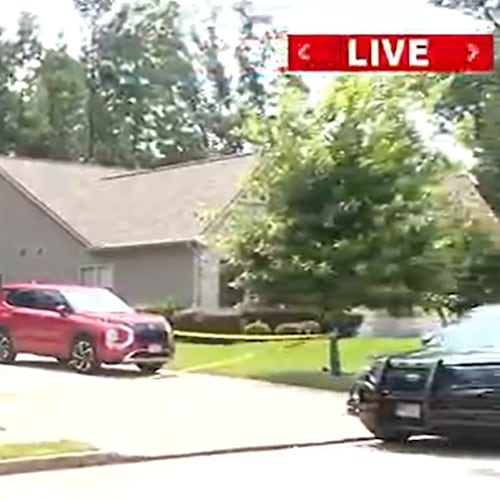If Georgia’s public colleges are to succeed — and the state’s economy is to flourish — during the next couple of decades, recruiters must learn how to convince a growing group of students, and their families, that higher education is a good deal.
Already they are trying out new tactics to recruit Latino students, a group that will soon make up nearly one in four of Georgia’s college-age residents. Sheer numbers make this an increasingly desirable demographic for colleges and for the state’s economic well-being.
But reaching these students can be daunting. Recruiters and students face several obstacles, financial and cultural, including language barriers, teens’ desires to support their families, a lack of knowledge about college and concerns over how to pay for it — especially if they are undocumented.
That means recruiters have to do more than just hang up posters in high school guidance offices. Instead, having learned the crucial role family plays, they go where students and their relatives are — churches, festivals, sporting events and other community gatherings.
Last month, Georgia Perimeter College recruiter Eric Cuevas waited until people walked up to his booth at Fiesta Georgia, one of the state’s largest Latino festivals. Then he approached them, talked about the two-year college and put fliers in their hands.
“If you want to get the students, you have to win over the ‘abuelas,’ ” Cuevas said, highlighting the Spanish word for grandmothers. “Part of recruiting these students is reassuring the mom, grandmother, uncle and everyone in the student’s life that college is the right next step.”
Include entire family
Dozens of recruiters are expected at the National Hispanic College Fair taking place today at Meadowcreek High in Norcross, vying for students, many of whom would be the first in their families to attend college, experts say.
Leaders say the students’ success will be crucial not only for colleges, but for Georgia’s economic standing.
“We are talking about our future students, but we’re also talking about Georgia’s future work force,” said Lisa Rossbacher, president of Southern Polytechnic State University. “It is critical to everyone that these students receive a college education. We’ve all had to look at how to recruit and support these students and that conversation must include the whole family.”
Rossbacher chaired a task force in the late 1990s looking at how the University System of Georgia should address the growing population. In 1994, Latinos made up 1.6 percent of the enrollment at the state’s public colleges and universities. Last year, Latinos made up 3.5 percent — or 9,874 students out of the state’s total enrollment of 282,978.
But in just 15 years, nearly one in four college-age students in the United States will be Latino, a national statistic that mirrors what is happening even more quickly in Georgia. Latinos comprised 4 percent of the state’s high school graduates in 2005, but they are projected to be 24 percent by 2022.
In response to the changing demographics, colleges hired bilingual recruiters and printed admissions and financial aid brochures in Spanish.
Southern Polytechnic, Georgia State University and others set up mentoring and scholarship programs for Latino students. Georgia State, the University of Georgia and others hold special recruiting programs tailored for Latino students and their families.
Yet challenges remain. While 89 percent of Latinos questioned say college is important, only 48 percent plan to get a degree, according to a national survey released this month by the Pew Hispanic Center.
“I see so many students who are torn over whether they should go to college,” said Kim Stewart, a graduation coach at North Gwinnett High School in Suwanee. “Whether it is a real need or a perception, so many feel obligated to support their families financially. And then we have some parents who didn’t get an advanced education here or in their home countries and don’t understand the need for college.”
About 75 percent of Latino students who cut their education short do so because of family obligations, according to the Pew survey.
Mauricio Chavez, a sophomore at Newton High School, filled out a postcard at last month’s Fiesta Georgia to get more information about Georgia Perimeter. He completed the form in English, speaking to relatives in Spanish.
“Of course I want to go to college, but I need to take care of my family, too,” he said.
Margarita Muñoz, director of GSU’s Office of Latino Student Services and Outreach, said many students lack motivation and knowledge about college. To help, her office started a program that pairs college students with high school students to help teens understand that going to college is possible, she said.
Making connections
Colleges often rely on current students in other ways to help with recruiting.
“I was just like them,” said Justin Fraley, 19, a student at Georgia Perimeter. “A lot of them look up to the people they see on their street. If they don’t have a doctor or lawyer or someone with a college degree on their street, how do they know they can do it?”
Fraley tells high school students about the Hispanic Connection club, which serves as a support network for Latino students and allows members to organize culture events for the entire college.
Cuevas, the Georgia Perimeter recruiter, takes care to assure families of the support in place for their children. At Fiesta Georgia he spoke with a mother and grandmother confused about the college letters their boy, a high school senior, received. None were written in Spanish.
The conversation followed a pattern that Cuevas said is typical for Latinos. While other families frequently ask about admission requirements first, he said many Latinos first ask about cost and whether the campus is safe. Then they ask if there are people who speak Spanish and who will help their child if they struggle. Only after those concerns are appeased do they ask about admission, he said.
Financial difficulties
Cuevas said many Latino families are reluctant to take on debt to pay for college. He explains that spending money on college now will help students earn higher salaries later.
Undocumented students have more financial obstacles. They can attend a public college but they must pay out-of-state tuition, even if they graduated from a Georgia high school. Out-of-state tuition can be triple what state residents pay.
While the state doesn’t track how many undocumented students pay out-of-state tuition, their higher costs make college much less affordable. These students are not eligible for the state’s academic HOPE scholarship and their immigration status means they cannot apply for government grants or low-cost loans.
Some scholarships are available and there are foundations that award scholarships without requiring proof of citizenship. Even so, the majority of Latinos in college enroll part time and work at the same time, according to Excelencia in Education, a national nonprofit that works to improve Latino success in college.
For his part, Georgia Perimeter’s Cuevas tells parents their children will work hard and see benefits later in life. Families make him promise to protect their children, he said.
“I’ve had parents call me if their child gets a parking ticket,” Cuevas said. “I basically hold students’ and their families’ hands from the first time I meet them in high school until they show up in college.”
Georgia’s college students
Latinos represent a quickly growing segment of Georgia’s college-age students. Here are the percentages of the state’s high school graduates by ethnicity:
*Estimated
Source: National Center for Education Statistics, U.S. Bureau of the Census
About the Author
The Latest
Featured

